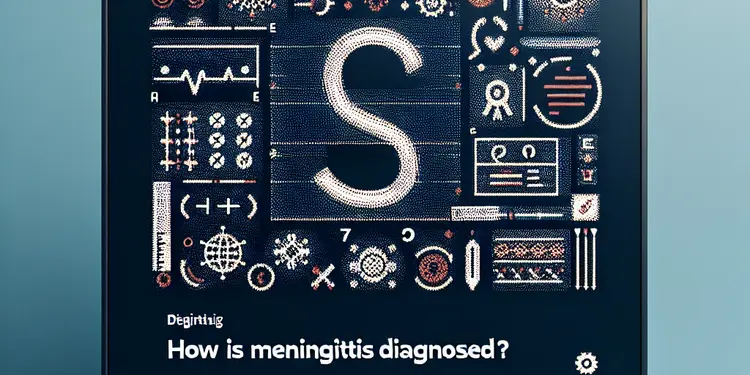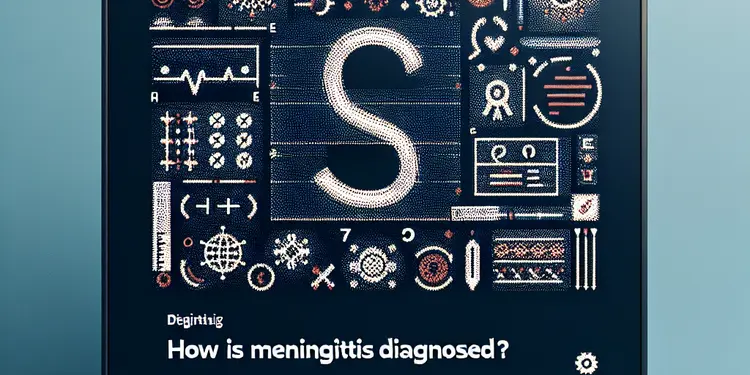
Find Help
More Items From Ergsy search
-

How is meningitis diagnosed?
Relevance: 100%
-

Why is meningitis a medical emergency?
Relevance: 95%
-

What is meningitis?
Relevance: 93%
-

What is non-infectious meningitis?
Relevance: 92%
-

What causes viral meningitis?
Relevance: 88%
-

What is the prognosis for viral meningitis?
Relevance: 88%
-

How serious is bacterial meningitis?
Relevance: 87%
-

What causes bacterial meningitis?
Relevance: 87%
-

Can meningitis be prevented?
Relevance: 87%
-

Is meningitis contagious?
Relevance: 86%
-

What is the treatment for bacterial meningitis?
Relevance: 85%
-

Are there vaccines for meningitis?
Relevance: 85%
-

How is fungal meningitis treated?
Relevance: 85%
-

What are the signs of meningitis in infants?
Relevance: 85%
-

What are the main types of meningitis?
Relevance: 85%
-

What are common symptoms of meningitis?
Relevance: 84%
-

Can meningitis cause long-term complications?
Relevance: 81%
-

How is viral meningitis spread?
Relevance: 79%
-

Who is at higher risk of contracting meningitis?
Relevance: 76%
-

Is vaccination recommended for seniors against meningitis?
Relevance: 75%
-

Do international students need the meningitis vaccine?
Relevance: 74%
-

Is meningitis vaccination required for military recruits?
Relevance: 74%
-

Who should get a meningitis vaccination?
Relevance: 74%
-

Are adults over 25 recommended for meningitis vaccination?
Relevance: 74%
-

Does the CDC recommend meningitis vaccines for adolescents?
Relevance: 73%
-

Should college students get the meningitis vaccine?
Relevance: 72%
-

Should health care workers get the meningitis vaccine?
Relevance: 72%
-

Are there any specific groups that should prioritize meningitis vaccination?
Relevance: 71%
-

Do people who have had meningitis in the past need to be vaccinated?
Relevance: 70%
-

What are the guidelines for meningitis vaccination for HIV-infected individuals?
Relevance: 69%
-

What are the meningitis vaccination recommendations for travelers to Hajj or Umrah?
Relevance: 68%
-

Prostate cancer diagnosis and tests
Relevance: 59%
-

BSL - Diagnosis of panic disorder
Relevance: 57%
-

Head and Neck Cancer Diagnosis
Relevance: 57%
-

Attention deficit hyperactivity disorder (ADHD) - Diagnosis
Relevance: 53%
-

BSL - Diagnosis of obsessive compulsive disorder (OCD)
Relevance: 52%
-

What is the life expectancy after a motor neurone disease diagnosis?
Relevance: 46%
-

Who is recommended to receive the meningitis vaccination?
Relevance: 32%
-

Should travelers consider getting a meningitis vaccine?
Relevance: 30%
-

At what age should children receive the meningococcal vaccine?
Relevance: 28%
Understanding Meningitis Diagnosis
Meningitis is a serious condition involving inflammation of the protective membranes covering the brain and spinal cord. Early diagnosis and treatment are crucial, as the condition can lead to severe complications or even prove fatal. Healthcare professionals in the UK follow a systematic approach for diagnosing meningitis, ensuring swift and accurate detection.
Initial Assessment
When a patient presents symptoms suggesting meningitis, such as a high fever, headache, neck stiffness, sensitivity to light, confusion, or a rash, a healthcare provider will conduct an initial assessment. This involves a thorough evaluation of the patient's medical history and a physical examination to check for signs indicative of meningitis.
Blood Tests
Blood tests are typically ordered early on to help identify potential causes of meningitis. These tests can reveal markers of infection and inflammation, such as an elevated white blood cell count. Blood cultures may also be conducted to detect bacteria or viruses in the bloodstream, which could indicate the type of meningitis.
Lumbar Puncture
A lumbar puncture, also known as a spinal tap, is a critical procedure for diagnosing meningitis. In this procedure, a needle is inserted into the lower back to collect cerebrospinal fluid (CSF) from the spinal canal. The CSF is then analyzed to look for signs of infection, such as bacteria, viruses, and increased white blood cells or proteins. The results of this test are vital in confirming the diagnosis and determining the cause of meningitis.
Imaging Tests
In some cases, imaging tests such as a CT scan or MRI of the brain may be recommended. These tests help doctors rule out other conditions that could cause similar neurological symptoms and complications, such as brain abscesses or strokes. Imaging can also identify any swelling or other changes in the brain often associated with meningitis.
Other Diagnostic Tests
If viral meningitis is suspected, additional tests like polymerase chain reaction (PCR) tests may be performed on the CSF to detect viral DNA or RNA. This method is highly sensitive and helps in identifying the specific virus causing the infection. In some instances, further tests on blood or urine samples might be conducted to understand the infection more precisely.
Conclusion
Diagnosing meningitis accurately and promptly is essential for effective treatment and management. In the UK, a combination of clinical assessments, laboratory testing, and imaging helps healthcare professionals diagnose this serious condition. Early intervention can significantly improve outcomes in patients suffering from both bacterial and viral forms of meningitis. Therefore, if meningitis is suspected, it is crucial to seek immediate medical attention.
Understanding Meningitis Diagnosis
Meningitis is a very serious illness. It happens when the covering of the brain and spinal cord gets inflamed. If someone gets meningitis, doctors need to find out quickly. This is important because meningitis can make people very sick or even cause death. In the UK, doctors follow steps to diagnose meningitis fast and accurately.
Initial Assessment
If a person has signs of meningitis, like high fever, headache, stiff neck, being sensitive to light, confusion, or a rash, they need to see a doctor. The doctor will ask questions about their health history and do a physical check-up to see if they have symptoms of meningitis.
Blood Tests
The doctor will often order blood tests to find out what might be causing the meningitis. These tests check for signs of infection or inflammation, like high white blood cell counts. They might also test the blood to see if bacteria or viruses are in it, which helps show what type of meningitis it is.
Lumbar Puncture
A lumbar puncture, or spinal tap, is important to diagnose meningitis. The doctor uses a needle to take fluid from the spine in the lower back. This fluid is tested in a lab to look for signs of infection, like bacteria or viruses. This test is crucial; it helps confirm if someone has meningitis and shows what caused it.
Imaging Tests
Sometimes, doctors use imaging tests like a CT scan or MRI. These tests make pictures of the brain. They help doctors check for other problems with the brain that could cause similar symptoms, like abscesses or strokes. Imaging can also show if the brain is swollen, which can happen with meningitis.
Other Diagnostic Tests
If doctors think meningitis is caused by a virus, they might do more tests on the spinal fluid. They can use special tests to find viral DNA or RNA. These tests are very precise and help identify which virus is causing the problem. Sometimes, more tests on blood or urine may give doctors more details about the infection.
Conclusion
It is very important to diagnose meningitis quickly and correctly to treat it effectively. In the UK, doctors use a mix of check-ups, lab tests, and imaging to find out if someone has meningitis. Acting fast can help people get better, whether the meningitis is from bacteria or a virus. If you think someone might have meningitis, seek medical help right away.
Frequently Asked Questions
What are the common tests used to diagnose meningitis?
The most common tests for diagnosing meningitis include a lumbar puncture (spinal tap), blood cultures, imaging tests like CT or MRI, and sometimes PCR tests for viral DNA.
Why is a lumbar puncture performed to diagnose meningitis?
A lumbar puncture is performed to obtain cerebrospinal fluid to test for signs of infection, such as elevated white blood cells, protein levels, and the presence of bacteria, viruses, or fungi.
How quickly can meningitis be diagnosed?
Diagnosis can occur within a few hours with a lumbar puncture, but cultures can take several days to confirm specific organisms. PCR tests can expedite viral diagnosis.
What role do blood cultures play in diagnosing meningitis?
Blood cultures can help identify bacteria present in the bloodstream that could cause bacterial meningitis, complementing findings from cerebrospinal fluid analysis.
Can imaging tests diagnose meningitis?
CT or MRI scans are not used to diagnose meningitis directly, but they can identify complications or rule out other conditions that might mimic symptoms of meningitis.
What is the importance of the cerebrospinal fluid analysis?
Cerebrospinal fluid analysis provides crucial information about the presence of infection, including cells, protein, glucose levels, and identifying the causative microorganisms.
Can a simple blood test diagnose meningitis?
While blood tests can indicate infection and support a diagnosis, definite diagnosis requires analysis of cerebrospinal fluid through a lumbar puncture.
How do doctors determine if meningitis is viral or bacterial?
Doctors analyze cerebrospinal fluid for bacteria and may use PCR to detect viral DNA or RNA, along with laboratory findings to differentiate between bacterial and viral meningitis.
Are there rapid tests available for meningitis diagnosis?
Some rapid tests like PCR can quickly detect viral DNA in cerebrospinal fluid, providing faster results than traditional cultures.
Can meningitis be diagnosed based solely on symptoms?
Symptoms can suggest meningitis but a definitive diagnosis requires laboratory tests such as cerebrospinal fluid analysis.
Why might a doctor order a CT scan before a lumbar puncture?
A CT scan may be ordered to rule out increased intracranial pressure or brain swelling, which can contraindicate immediate lumbar puncture.
What does a high white blood cell count in CSF indicate?
A high white blood cell count in cerebrospinal fluid typically indicates inflammation, often due to infection like meningitis.
Why is glucose measured in cerebrospinal fluid analysis?
Glucose levels in CSF are measured because low levels can indicate bacterial meningitis, while normal levels are usually seen in viral meningitis.
Can PCR tests detect all types of meningitis?
PCR tests are very effective for detecting viral causes of meningitis, but bacterial and fungal meningitis usually require culture or antigen tests.
What role does serology play in diagnosing meningitis?
Serological tests can detect antibodies to certain viruses, supporting diagnosis when PCR and culture are inconclusive.
How does protein concentration in CSF affect meningitis diagnosis?
Elevated protein levels in CSF can indicate inflammation or infection, often associated with meningitis.
Why is a clinical examination important in diagnosing meningitis?
Clinical examination helps identify signs and symptoms suggestive of meningitis, guiding the need for further testing like lumbar puncture.
Can meningitis be detected through a urine test?
Urine tests are not used for diagnosing meningitis; diagnosis primarily relies on cerebrospinal fluid and blood tests.
How is fungal meningitis diagnosed?
Fungal meningitis is diagnosed through CSF analysis, looking for fungi and using cultures to identify the specific type of fungus.
What is the difference between diagnosing bacterial and viral meningitis?
Bacterial meningitis is diagnosed with cultures and Gram staining of CSF, while viral meningitis often uses PCR tests to detect viral genetic material.
What tests do doctors use to find out if someone has meningitis?
The main tests to find out if someone has meningitis are:
1. **Spinal Tap:** This is when a doctor takes a little bit of liquid from your lower back to look at it.
2. **Blood Test:** Doctors check your blood for any signs of sickness.
3. **Imaging Tests:** These are special pictures, like a CT or MRI scan, that show what’s happening inside your head.
4. **PCR Test:** This test looks for tiny bits of virus information in your body.
Sometimes, letting an adult know you have questions and taking deep breaths can help if you feel nervous about tests.
Why do doctors use a lumbar puncture to find out if someone has meningitis?
Doctors use a special test called a lumbar puncture to see if someone has meningitis.
This test helps doctors see if there is a problem in the brain or spine.
A lumbar puncture is when doctors take a small amount of liquid from the back to check it.
Doctors look at the liquid to see if there are signs of meningitis.
If you have trouble understanding, you can ask someone to help you read or use pictures to help understand better.
A lumbar puncture is a medical test. Doctors use it to get a bit of fluid from your back. This fluid helps them see if you have an infection. They check for more white blood cells, proteins, and if there are any germs like bacteria, viruses, or fungi in the fluid.
How fast can doctors find out if someone has meningitis?
Doctors can find out what's wrong in a few hours with a test called a lumbar puncture. It might take a few days to get the full answer because of tests called cultures. PCR tests can help find out fast if it's a virus.
How do blood tests help find out if someone has meningitis?
Doctors use a blood test to look for signs of meningitis. This test checks if there are germs in the blood that can make you sick.
If germs are found, doctors can tell what medicine will work best.
It is important to find out quickly if someone has meningitis. This helps them get the right treatment faster.
Need help with reading? You can try using audiobooks or ask someone to read with you. Drawing pictures of the information might also help you understand better.
Blood tests can find germs in the blood that might cause a sickness called bacterial meningitis. This helps doctors learn more about the sickness by also looking at a special liquid from around the spine and brain.
Can pictures from a machine show if someone has meningitis?
Doctors do not use CT or MRI scans to find meningitis. But these scans can find other problems or check if something else is causing the same symptoms as meningitis.
Why is it important to study cerebrospinal fluid?
Cerebrospinal fluid analysis helps doctors find out if there is an infection. It checks for things like cells, protein, glucose levels, and what germs are causing the problem.
Can a blood test tell if you have meningitis?
Doctors can use a blood test to check for signs of meningitis. But, they might need to do other tests too. A blood test alone may not be enough.
If you or someone you know needs help with reading, try using:
- Reading apps that read text aloud.
- Colored overlays or rulers to keep track of lines.
- Ask someone to help explain the words.
Blood tests can help find out if there is an infection. But to be sure, doctors need to check the fluid around the brain and spine. They do this with a special test called a lumbar puncture.
How do doctors find out if meningitis is viral or bacterial?
Doctors want to know what type of meningitis someone has. It can be caused by different germs. These are called viruses and bacteria.
To find out which one it is, doctors do a special test. They take a small sample of fluid from the back. It's called a spinal tap. They look at the fluid to see if it has viruses or bacteria.
If doctors find bacteria, the meningitis is bacterial. If they find a virus, it is viral. This helps doctors choose the right medicine to help you feel better.
If you need help reading, ask someone to read with you. You can also use tools that read the words out loud.
Doctors look at a liquid called cerebrospinal fluid to check for germs. They also use special tests to find viruses. This helps them know if someone has bacterial or viral meningitis.
Can you get quick tests for meningitis?
Some fast tests, like PCR tests, can find virus DNA in the brain's water (called cerebrospinal fluid) quickly. This gives us results faster than old tests.
Can doctors tell if someone has meningitis just from symptoms?
Sometimes, signs can show a person might have meningitis. But to know for sure, doctors need to do special lab tests. They need to check the fluid around the brain and spine.
Why would a doctor ask for a CT scan before a lumbar puncture?
A CT scan is a special picture of the inside of your body.
A doctor might want this picture before doing a lumbar puncture because:
- They want to make sure it's safe to do the lumbar puncture.
- The picture helps them see if there is a problem in your head.
- This can help them figure out the best way to help you.
If you find reading hard, here are some tips:
- Ask someone to read it with you.
- Use a computer or phone to read aloud to you.
- Write down questions and ask a doctor to explain.
A doctor might ask for a CT scan to check if there is too much pressure in the brain or if the brain is swollen. This is important to know before doing a test called a lumbar puncture.
What does a high white blood cell count in CSF mean?
If there are a lot of white blood cells in your CSF (the liquid around your brain and spine), it might mean something is wrong.
It can mean there is an infection, like meningitis.
Doctors look at this to know more about your health.
It’s good to ask your doctor questions if you don’t understand.
Using pictures or talking to someone you trust can help you understand better.
If there are lots of white blood cells in the fluid around the brain and spine, it usually means there is swelling because of an infection. This could be something like meningitis.
Why do we check sugar in brain fluid tests?
The brain has a special fluid around it. We call it "brain fluid" or "cerebrospinal fluid." This fluid helps keep the brain safe.
Doctors look at the sugar in this fluid to see how healthy it is. Sugar gives energy to our brain. It is important for our brain to have the right amount of sugar.
If the sugar level is too high or too low, it might mean there is a problem. Doctors can then know if someone needs more help.
Sometimes, doctors use pictures or videos to explain this better. Family members or friends can also help understand the information.
Doctors check how much sugar, called glucose, is in your brain fluid. If the sugar is low, it might mean you have a serious illness called bacterial meningitis. If the sugar is normal, it usually means you have a different illness called viral meningitis.
Do PCR tests find all kinds of meningitis?
Let's talk about PCR tests and meningitis. A PCR test is a special test that looks for germs in our bodies. It helps doctors see if someone is sick.
Meningitis is when germs make the brain or spine very sick. There are different kinds of germs that can cause meningitis. These germs can be viruses, bacteria, or fungi.
PCR tests are good at finding some kinds of germs, but not all. They work well for some cases of meningitis, like viral and bacterial. But sometimes, they might miss others.
If you want to know more, talking to a doctor is a great idea. They can use other tests to check for meningitis too.
PCR tests are very good at finding viruses that cause meningitis. But for bacterial and fungal meningitis, doctors usually need other tests, like culture or antigen tests.
How does serology help find out if someone has meningitis?
Serology is a blood test that looks for signs of infection. It can show if someone has meningitis by finding special signs in the blood.
To make things easier, you can use:
- Simple words or pictures to explain what serology does.
- A helper or a friend who understands it better can explain it to you.
- Videos or stories that explain meningitis and blood tests in simple ways.
Blood tests can find special fighter cells our body makes when we have a virus. This helps doctors know what's wrong if other tests don't give clear answers.
How does protein amount in spinal fluid help doctors find meningitis?
Meningitis is when the covering of the brain gets sick.
The spine has a special liquid called spinal fluid. This fluid helps protect the brain and spine.
Doctors look at how much protein is in the spinal fluid to see if someone might have meningitis.
If there is too much protein in the spinal fluid, it might mean the person has meningitis.
Doctors use this information to help them know what is wrong and how to help the person.
If you want to learn more or need help understanding, ask someone you trust to explain it.
If there's a lot of protein in the brain's water (called CSF), it might mean there's swelling or an infection. This can sometimes happen if someone has a sickness called meningitis.
Why do doctors check your body to find out if you have meningitis?
Doctors check your body to see if you might have meningitis. This is important because:
- Meningitis is a serious sickness that affects your brain.
- Doctors look for signs like headache, fever, or a stiff neck.
- Finding out early can help you get better faster with the right treatment.
To help understand more, you can:
- Ask the doctor to use simple words.
- Bring someone with you to listen and take notes.
- Use pictures or videos to learn more.
A doctor's check-up can help find signs of meningitis. This helps decide if more tests are needed, like a lumbar puncture.
Can a urine test find meningitis?
Meningitis is an illness. It makes the brain and spine swell.
Doctors usually do not find meningitis with a urine test.
They often use other tests like blood tests or a small needle in the back called a lumbar puncture.
If you have more questions, ask a doctor or nurse. They can help explain.
Tools like talking computers or picture cards can help understand better.
Doctors do not use pee (urine) tests to find out if someone has meningitis. They use tests on the fluid around the brain and on blood to check for it.
How do doctors find out if someone has fungal meningitis?
Doctors find out if someone has fungal meningitis by checking the fluid around the brain and spine. They look for fungus and grow it in a lab to see what kind it is.
How do doctors tell if meningitis is from bacteria or a virus?
Bacterial meningitis is found by looking at CSF with special tests called cultures and Gram staining. For viral meningitis, doctors use PCR tests to find virus genes.
Useful Links
- Ergsy carfully checks the information in the videos we provide here.
- Videos shown by Youtube after a video has completed, have NOT been reviewed by ERGSY.
- To view, click the arrow in centre of video.
- Most of the videos you find here will have subtitles and/or closed captions available.
- You may need to turn these on, and choose your preferred language.
- Go to the video you'd like to watch.
- If closed captions (CC) are available, settings will be visible on the bottom right of the video player.
- To turn on Captions, click settings .
- To turn off Captions, click settings again.
More Items From Ergsy search
-

How is meningitis diagnosed?
Relevance: 100%
-

Why is meningitis a medical emergency?
Relevance: 95%
-

What is meningitis?
Relevance: 93%
-

What is non-infectious meningitis?
Relevance: 92%
-

What causes viral meningitis?
Relevance: 88%
-

What is the prognosis for viral meningitis?
Relevance: 88%
-

How serious is bacterial meningitis?
Relevance: 87%
-

What causes bacterial meningitis?
Relevance: 87%
-

Can meningitis be prevented?
Relevance: 87%
-

Is meningitis contagious?
Relevance: 86%
-

What is the treatment for bacterial meningitis?
Relevance: 85%
-

Are there vaccines for meningitis?
Relevance: 85%
-

How is fungal meningitis treated?
Relevance: 85%
-

What are the signs of meningitis in infants?
Relevance: 85%
-

What are the main types of meningitis?
Relevance: 85%
-

What are common symptoms of meningitis?
Relevance: 84%
-

Can meningitis cause long-term complications?
Relevance: 81%
-

How is viral meningitis spread?
Relevance: 79%
-

Who is at higher risk of contracting meningitis?
Relevance: 76%
-

Is vaccination recommended for seniors against meningitis?
Relevance: 75%
-

Do international students need the meningitis vaccine?
Relevance: 74%
-

Is meningitis vaccination required for military recruits?
Relevance: 74%
-

Who should get a meningitis vaccination?
Relevance: 74%
-

Are adults over 25 recommended for meningitis vaccination?
Relevance: 74%
-

Does the CDC recommend meningitis vaccines for adolescents?
Relevance: 73%
-

Should college students get the meningitis vaccine?
Relevance: 72%
-

Should health care workers get the meningitis vaccine?
Relevance: 72%
-

Are there any specific groups that should prioritize meningitis vaccination?
Relevance: 71%
-

Do people who have had meningitis in the past need to be vaccinated?
Relevance: 70%
-

What are the guidelines for meningitis vaccination for HIV-infected individuals?
Relevance: 69%
-

What are the meningitis vaccination recommendations for travelers to Hajj or Umrah?
Relevance: 68%
-

Prostate cancer diagnosis and tests
Relevance: 59%
-

BSL - Diagnosis of panic disorder
Relevance: 57%
-

Head and Neck Cancer Diagnosis
Relevance: 57%
-

Attention deficit hyperactivity disorder (ADHD) - Diagnosis
Relevance: 53%
-

BSL - Diagnosis of obsessive compulsive disorder (OCD)
Relevance: 52%
-

What is the life expectancy after a motor neurone disease diagnosis?
Relevance: 46%
-

Who is recommended to receive the meningitis vaccination?
Relevance: 32%
-

Should travelers consider getting a meningitis vaccine?
Relevance: 30%
-

At what age should children receive the meningococcal vaccine?
Relevance: 28%


